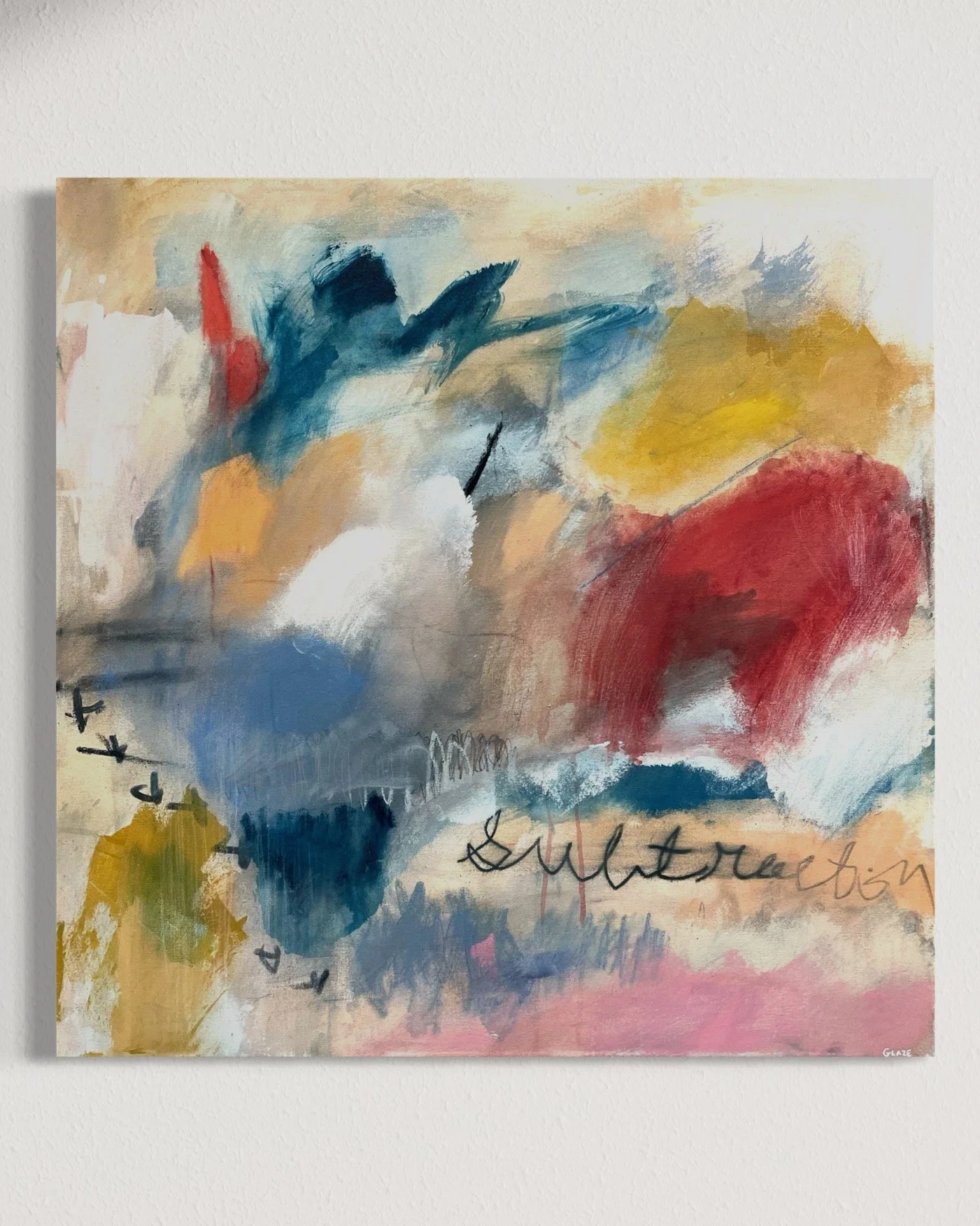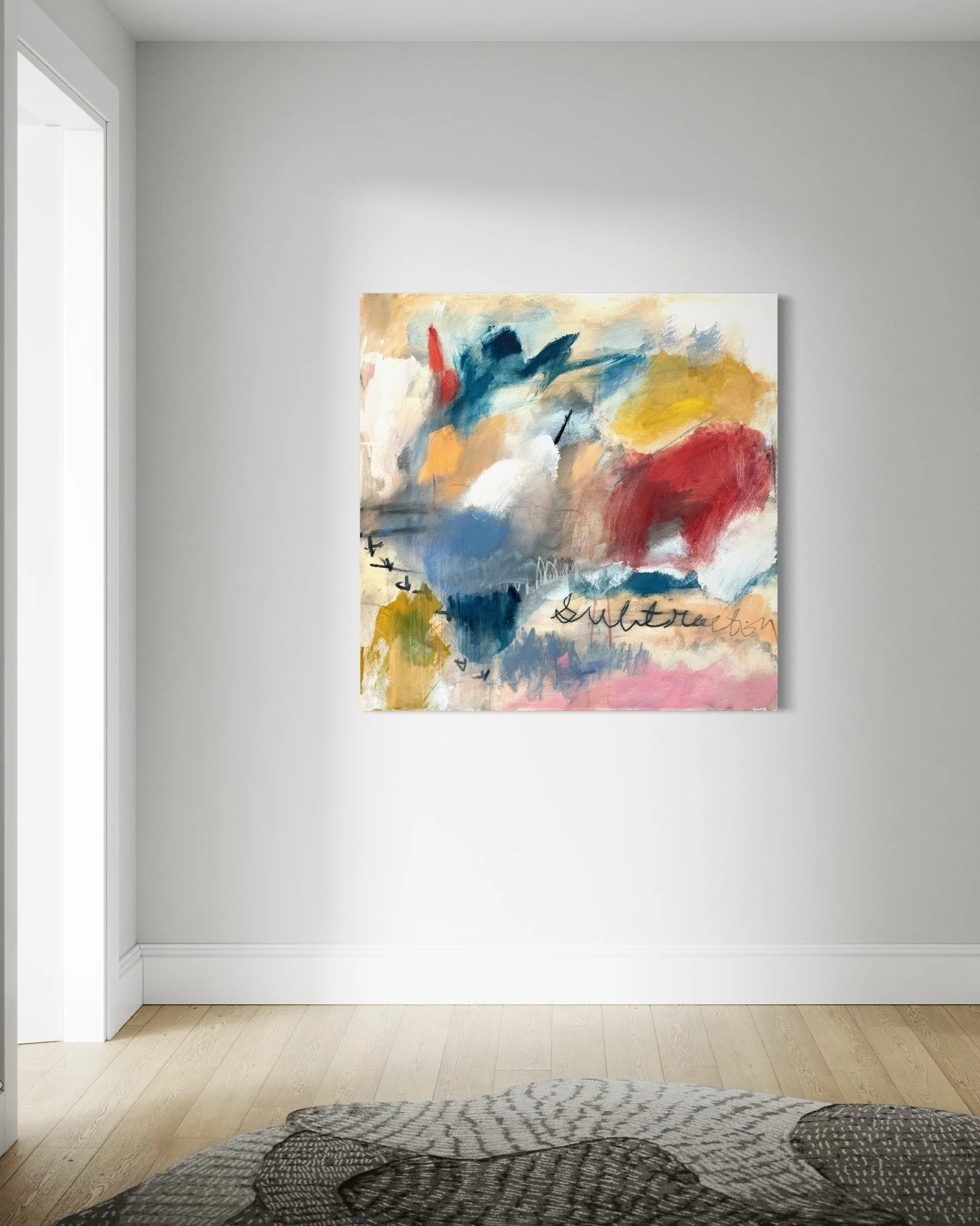On Subtraction
Hermitage
“the desert is full of hidden places”
By Amy Katherine Cannon
we sought to disappear from memory to be seen was to fall
our inner selves unknown and unproven
were both plant and seed tended with little water
a true amma did not seek out students
guarded jealously her cell shaped by desert life
obtaining perfection gladness in her suffering
we who have nothing do not fill ourselves with bread
choose instead voluntary poverty a bird who abandons her nest
will acquire everything an interior dwelling
be solitary in mind attentive and watchful
and your heart will be changed into a spring of water
those sit closest to God who practice nothing.
“Hermitage” (2025)
Growing up in the desert, I was captivated by petroglyphs. Unlike other artworks from indigenous communities, these ancient marking were etched directly into stone. Rather than paint resting on a surface, these artists carved into the rock itself, sculpting permanence into the earth. Scattered across the desert, their inscriptions carried stories and memories that neither heat nor drought could erase. In the bleached monotone of sand and stone they are almost invisible until a cool rain, revealing what had been hidden. Lines once lost in dust and bleaching light emerge in stark relief against the beige rock.
Hermitage is a newer painting that opened a doorway into a series of work and spiritual exploration. These paintings continue the labor of searching for the interior dwelling, the inner stable ground where God and self meet. The desire to find that inner sanctuary often begins with an external encounter: a teaching heard, a text read, or a moment that stirs a longing to walk a new spiritual path. Yet the journey inward requires abandoning the very encounter that called us to it.
In our spiritual path, the teachers, mentors, and sacred texts that inspired us can often become obstacles that distance us from the place we long to reach. To go there, we must turn inward and relinquish every prop that makes us feel safe. We must learn from our initial encounters and questions, and then abandon them for a more radical interiority. Entering the inner sanctuary means “choosing instead voluntary poverty.” And in that shelter, neither drought nor deluge, erosion nor renewal can erase what we find. Each subtraction reveals another spring of water, flowing from within, needing no external source.
In her poem “the desert is full of hidden places”, Amy Cannon writes of this paradox. What appears void and barren conceals entire worlds. Preferring shade to the barrenness of noonday heat, we avoid the very ground where revelation waits. Yet the spring is hidden in the rock itself.
The painting Hermitage (2025) evokes this same inner landscape. Its sandswept hues suggest a surface scoured by monsoon rains, baked and cracked by unrelenting sun. Yet within that vast expanse, faint etchings glimmer through the surface. Why have some marks endured while others vanished? How do we read a story when only fragments remain and the grammar has been eroded by time?
Each mark is a quiet testimony to presence, a trace of life that once belonged to a community. Time cannot fracture the continuity of our human connection. Where do we rediscover this connection? In the paradox of solitude. By entering the interior dwelling, by being attentive and watchful, we find that “the practice of nothing” contains all we seek.

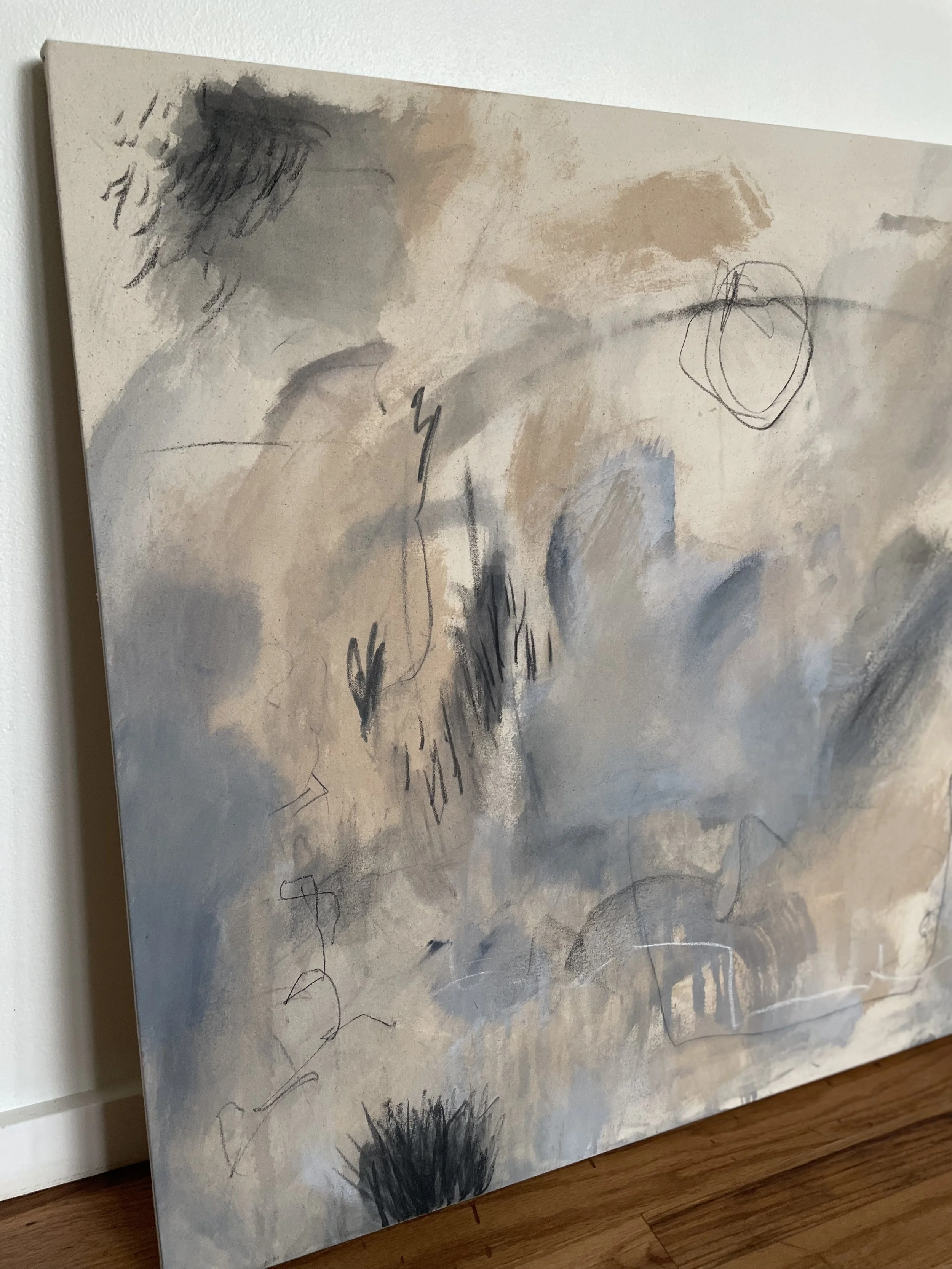
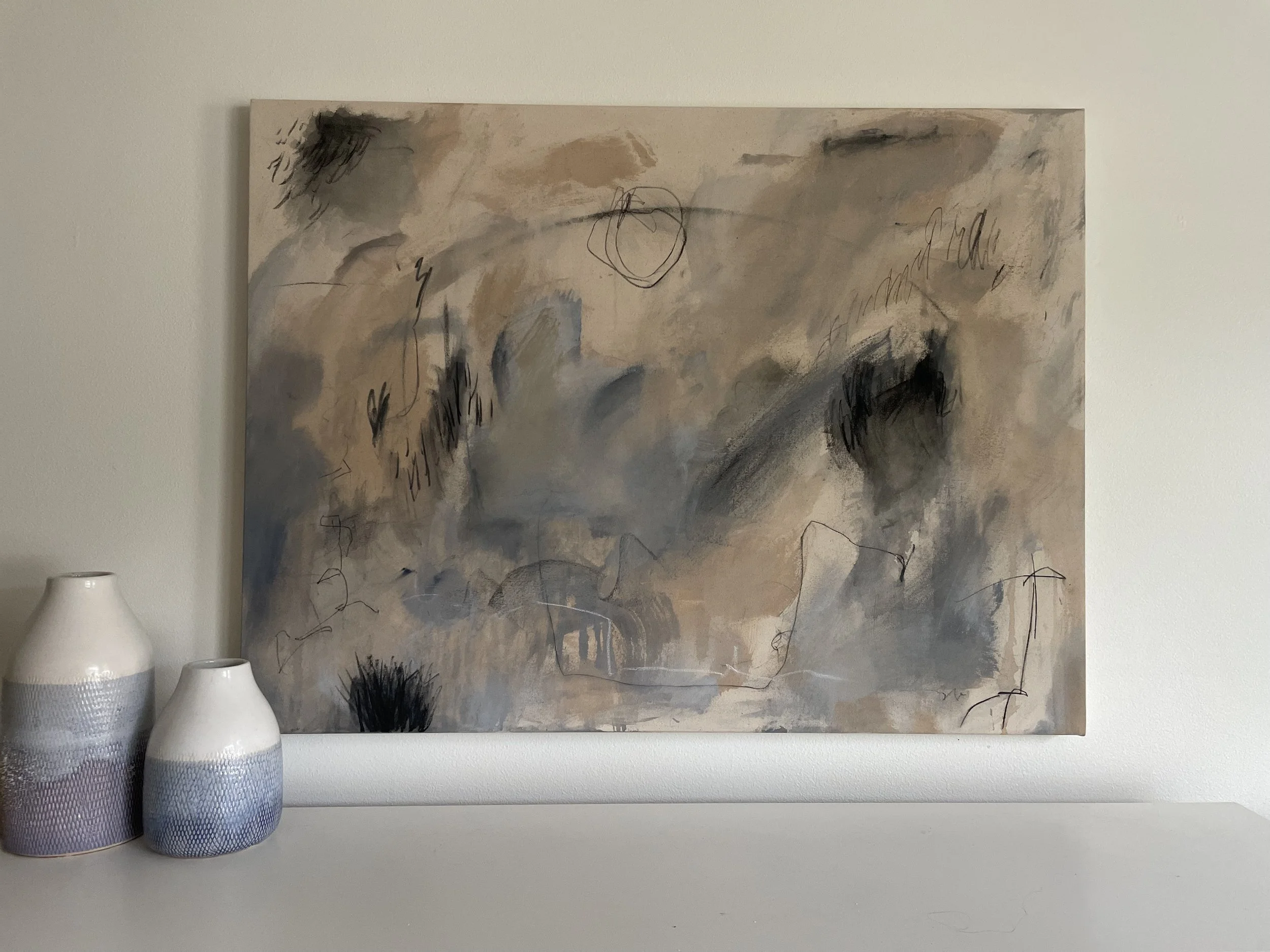
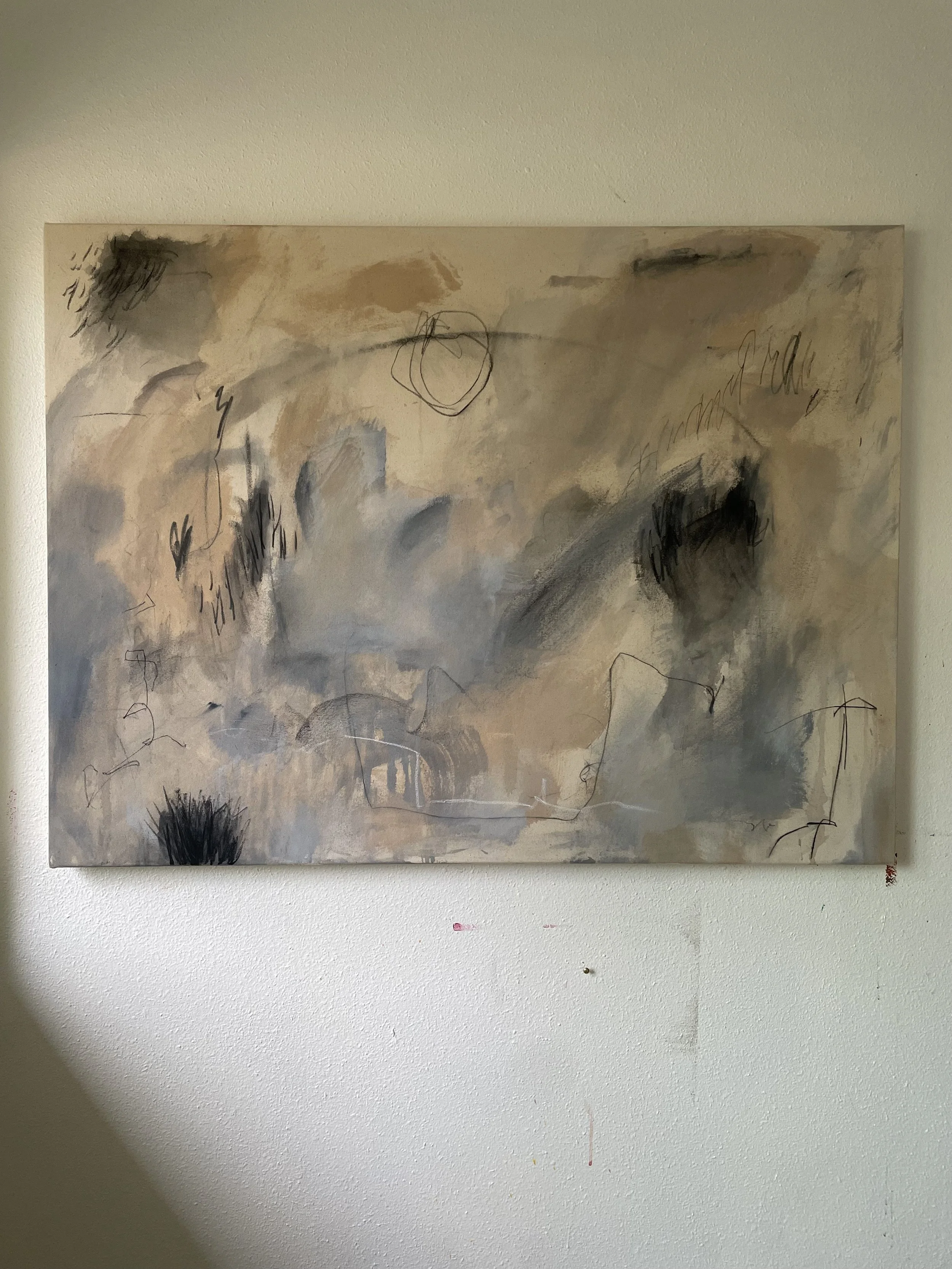
The Truth of Heretics
"God is not found in the soul by adding anything, but by a process of subtraction."
—Meister Eckhart
“The Truth of Heretics” (2025)
Just as rain reveals the hidden inscriptions carved into desert stone, the painting The Truth of Heretics (2025) emerges from a similar process of uncovering. It is the first in a new series that explores the movement of subtraction and surrender, the gradual erasure through which what is essential begins to appear. This work contemplates the same paradox that shaped the petroglyphs of my childhood: revelation often requires removal, and presence is found through seeming absence.
Drawing on the contemplative wisdom of Meister Eckhart, the painting holds the tension of opposites such as warmth and cold, illumination and shadow, clarity and obscurity. Each contrast becomes a necessary companion to its other. The viewer is invited to acknowledge the clamor and contradiction of life, allowing every element to settle into stillness. To linger on any single part is to become lost in distraction, yet to reject the parts entirely is to miss the beauty they collectively offer. The work asks for a posture of seeing that both embraces and releases.
As the layers of the painting accumulate, they also erode. Surfaces are built up only to be wiped away. What remains is not what was added, but what was revealed through the act of removal. This rhythm mirrors the spiritual path itself. We erase image after image, thought after thought, belief after belief. We release even the question we once believed essential. Eventually, we release the very practice of release, the final handhold, until only stillness remains.
Contemplative abstract art becomes a way to walk toward the inner sanctuary and uncover the hidden wisdom that lies beneath the surface of things. Through the act of making, we scrub away illusion and dismantle the craving for success or recognition. Each brushstroke is both an approach and a letting go, an arrival and a departure. The process asks us to allow former delights and discoveries to rest in their place and then fade.
Again and again, subtraction reveals a vast inner emptiness that is also the fullness of all things. What appears erased is not lost, but transformed. Like rain over stone, the gesture of removal discloses what endures beneath, the quiet truth that has always been there, waiting to be seen.
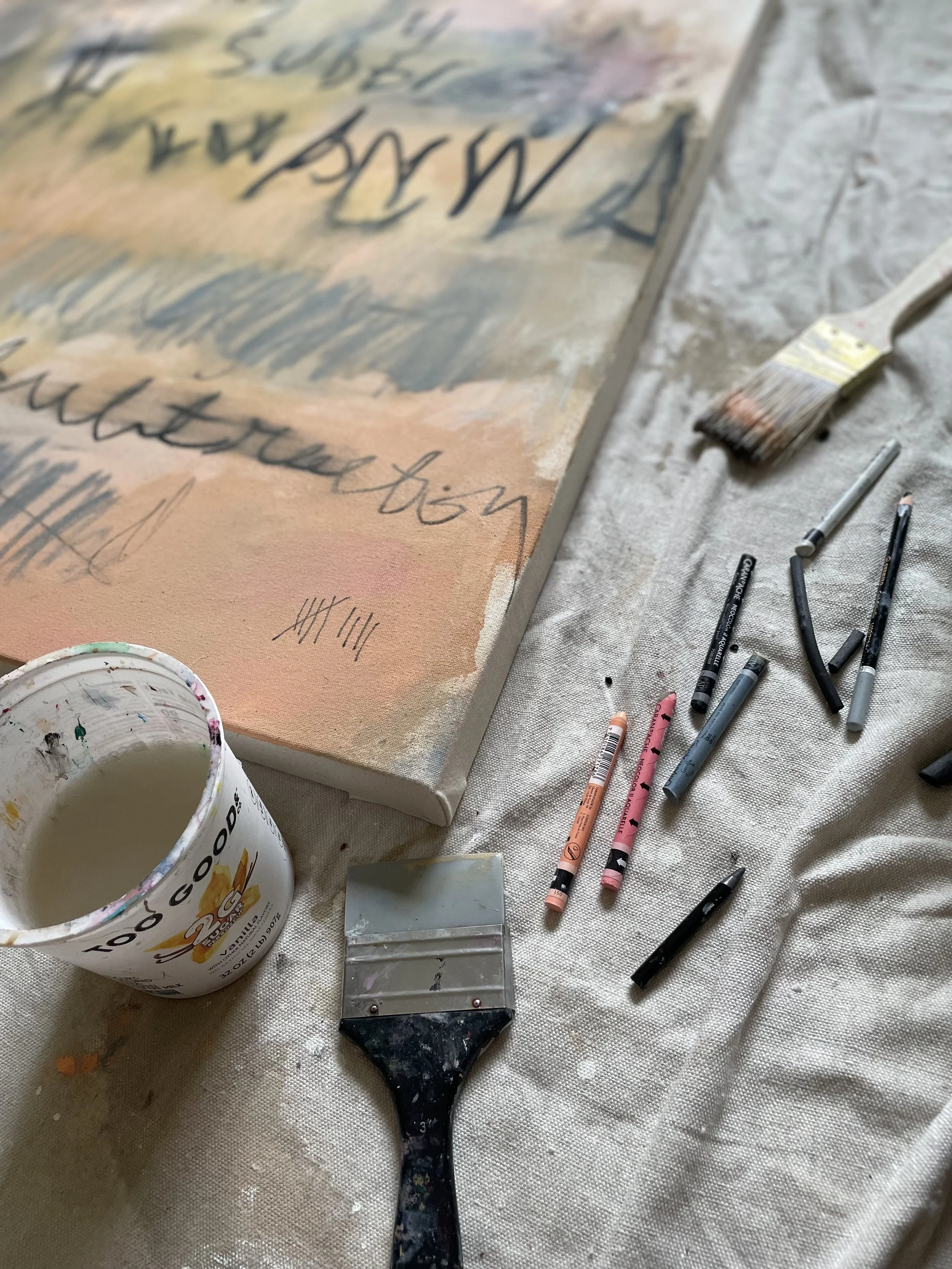


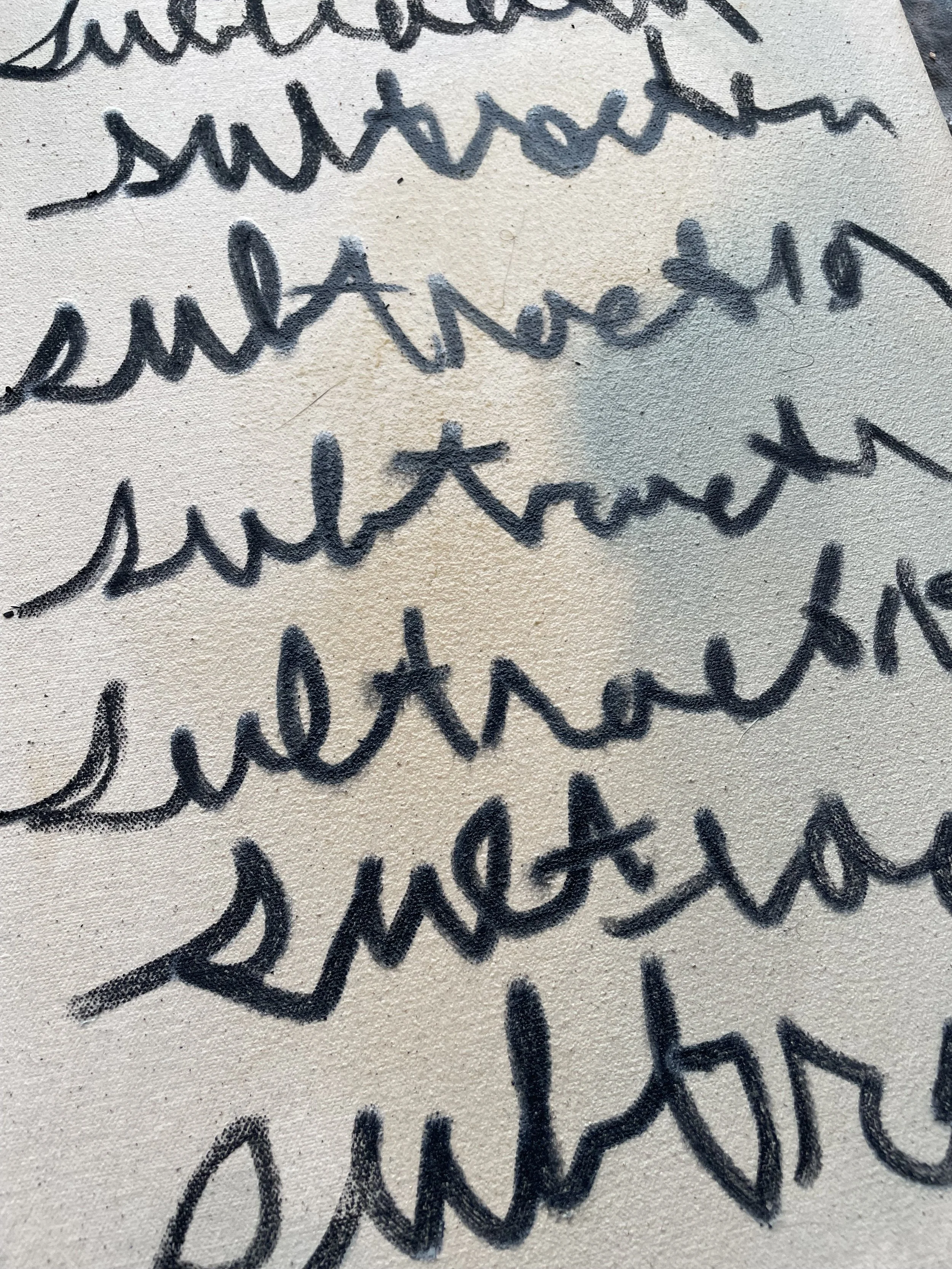
Studio Updates
Portland Open Studios
This weekend is the last weekend of Portland Open Studios. If you’re in the area, I would love to have you come by studio 56 for a visit. Doors will be open 10a - 4p on Saturday and Sunday. Be sure to check out the other incredible artists in the tour as you plan your weekend. You can see the whole studio tour lineup here.
Virtual Open Studios
If you aren’t able to make it to PDX open studios, never fear! I’m going to be hosting a “virtual open studio” online featuring new works and deep studio discounts until the end of October. Stay tuned and follow me on instagram to see new work and to get a new favorite painting at an affordable price.
The Spiritual Artist podcast
In case you missed it, I had the great joy of being a featured guest on The Spiritual Artist podcast with CJ Miller. We talked about my journey into painting, my current processes, inspirations, and lots more. You can watch the interview here on YouTube or listen to the episode on your favorite podcast platform.

